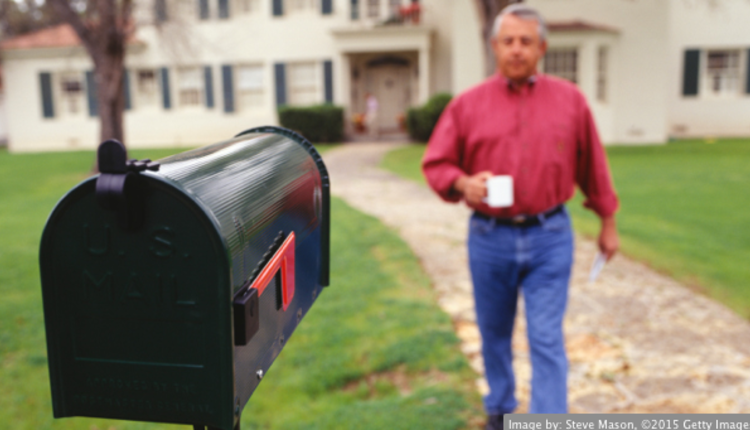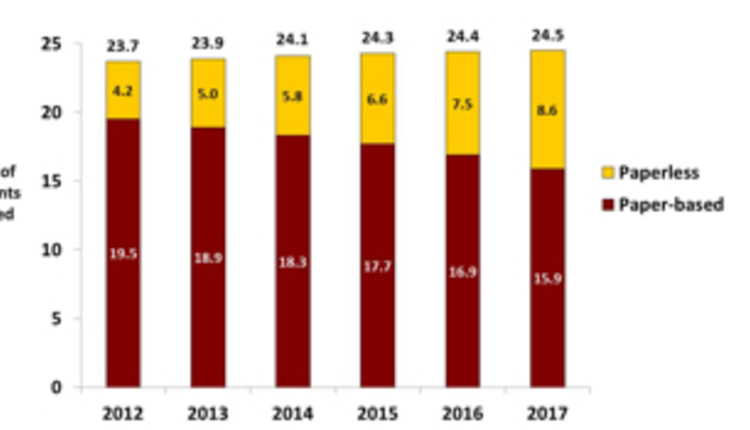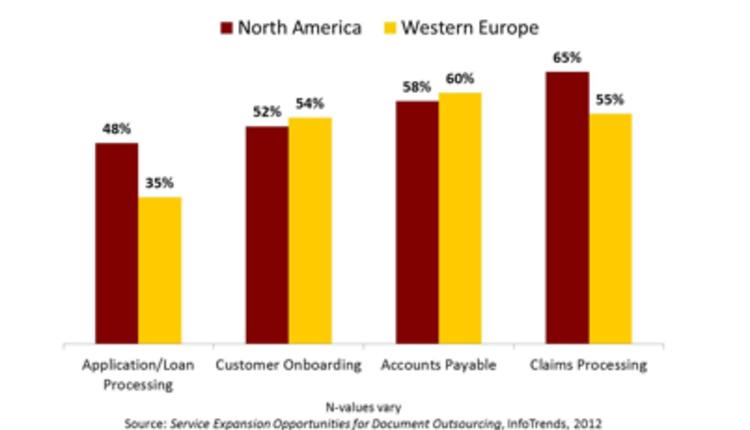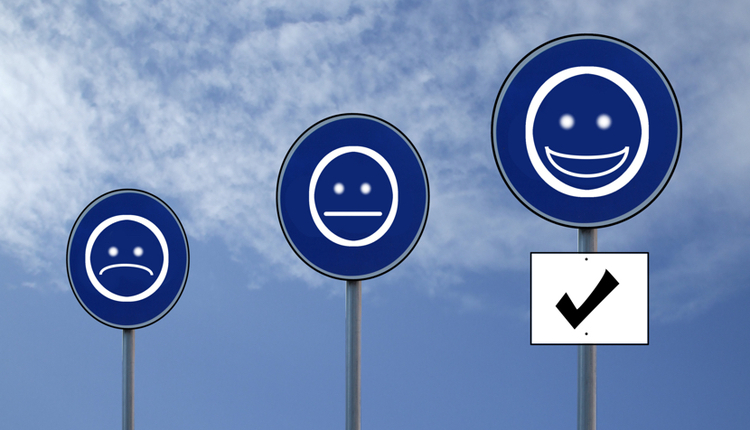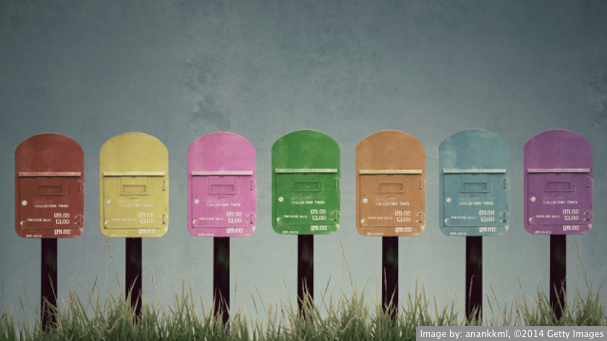
Consider this: Americans will receive more than 24 billion household bills and statements this year and make 15 billion household bill payments. InfoTrends research, including our “State of the Customer Communications Market Survey,” on businesses (senders) and consumers (recipients) in the United States (US) tracks how these delivery and payment markets are evolving. At a high level, our research continues to suggest that business expectations for paperless delivery adoption always exceed realized gains. Despite the efforts of bill and statement providers to move customers away from receiving paper-based communications, consumers still cite that they value the physical document as a hard copy archive and as a reminder to pay. While many payments have moved away from paper, InfoTrends estimates that only 23% of bills and statements will be delivered as “paperless” this year.
Many discussions around document delivery are focused on paper versus paperless; however, it is much more than that since the number of delivery and payment channels has expanded dramatically. For instance, when a communication is delivered as paperless, the customer may want to access it via the web (desktop, mobile, smart TV), via a mobile app or within an email or email attachment—not to mention that his/her preferred source of interaction with the communication could be through a third party, such as a bank, digital mailbox or other non-bank consolidation service. Needless to say, this market is more complex today than ever before.
Many discussions around document delivery are focused on paper versus paperless; however, it is much more than that since the number of delivery and payment channels has expanded dramatically. For instance, when a communication is delivered as paperless, the customer may want to access it via the web (desktop, mobile, smart TV), via a mobile app or within an email or email attachment—not to mention that his/her preferred source of interaction with the communication could be through a third party, such as a bank, digital mailbox or other non-bank consolidation service. Needless to say, this market is more complex today than ever before.
By 2018, we expect that 37% of bills and statements will be delivered as paperless—with significant growth in customer demand for alternative digital access beyond a desktop-friendly viewing experience.
From a document outsourcing perspective, this complexity is driving net new wins from mid-sized enterprises that lack the internal resources to keep up with these changes. There has also been several very large customer communications print outsourcing wins in the US over the last 18 months. For instance, American Express, Fidelity and a top five bank made the decision to close their in-house printing operations and move to an outsourced environment. Compared to other global markets where customer communications print outsourcing is mature—such as Australia and the United Kingdom (UK)—there remains significant opportunity for outsourcing service providers in the US. While some of the deals are strictly for outsourcing of print services, other enterprises are asking for support with managing creative services, optimizing for all delivery channels, customer onboarding, data analytics, as well as inbound interactions like the call center and household bill payment.
On this last point, household bill payment trends are of particular interest to InfoTrends as it relates to the digital mailbox and broader bill consolidation channel. Whether the payment process is managed by an outsourcing services provider or within the enterprise, our view is that where customers pay these bills will have a greater influence on where they prefer to receive them—which will directly impact the senders of these customer communications. In fact, InfoTrends recently led a session at Money20/20, an event for emerging payments and connected commerce, on the digital mailbox and household bill payment. Our session focused on research highlights and included a panel discussion among the CEOs from doxo, Finovera and Inlet. Few of the 400-plus session attendees would likely be DOCUMENT Strategy Forum participants; however, they gravitated toward the concept of the digital mailbox as a customer destination and a driver for customers to centrally receive and pay their bills. While these attendees were interested in the bill payment component of the discussion, the implications of broader bill payment adoption via consolidation services for document design, presentment and broader strategy are significant.
With the complexities that come with advances in the customer communications market, it is critical for enterprises to focus on optimizing customer experience across channels. By 2018, we expect that 37% of bills and statements will be delivered as paperless—with significant growth in customer demand for alternative digital access beyond a desktop-friendly viewing experience. In the enterprise drive to improve the digital experience for customers, however, note that we expect the other 63% of bills and statements will still be print-based. This means that it is important for enterprises to continue to invest in improving on and optimizing the printed communication as well. For enterprises to keep pace in this fast-evolving presentment and payment market, expand your customer communications strategy to include new channels, optimize every channel and outsource where you lack the resources or drive to make these changes.
Matt Swain is a director for InfoTrends and responsible for driving global research and consulting initiatives in the customer communications and document outsourcing markets. He is also a frequent speaker at industry events worldwide. Follow him on Twitter at @SwainfoTrends, or for more information on InfoTrends research and advisory services in this area, please contact scott.phinney@infotrends.com.





